How to Make a Picture Talk with AI in 2025
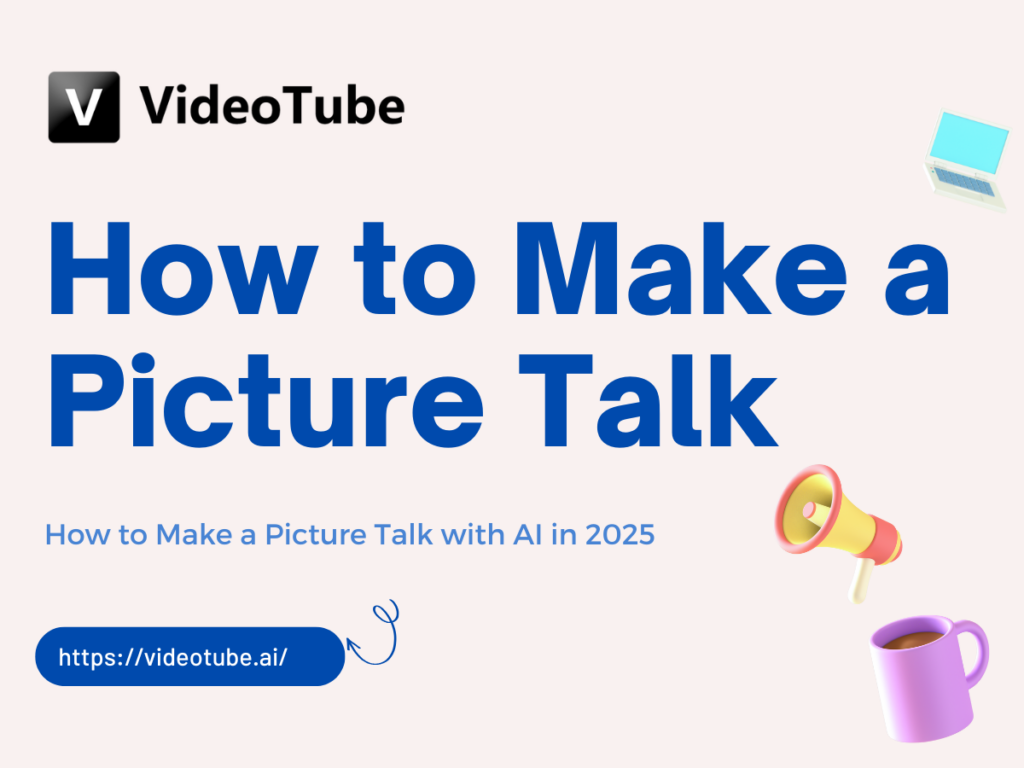
- What does it mean to "make a picture talk"
- Why it's trending in 2025
- Top AI Tools to Make a Picture Talk
- Step-by-Step: How to Make a Picture Talk with AI
- Use Cases in 2025
- Tips for More Realistic Talking Photos
- Ethical Concerns and Deepfake Warnings
- Future Trends: What's Next Beyond Talking Photos
- Conclusion
What Does It Mean to "Make a Picture Talk"
Imagine you have a photo of your grandma. After a little while, that picture starts speaking. She can say your birthday wishes in the voice you recognize. Or think about using a photo of your company’s mascot. It talks about your product in an entertaining short video. This is what it means to make a picture talk.
This magic happens through artificial intelligence (AI). It makes static images move as if they're alive. The picture can show natural facial movements, speak words that match those movements, and even display small emotions. This process brings together deep learning, computer vision, and voice synthesis to animate still photos.
People use this technology for various things. It could be storytelling, creating tutorials, or making digital avatars. Really, the only thing stopping you is how far your imagination can go.
Why It's Trending in 2025
In 2025, people have very short attention spans, like watching a quick cat video at double speed. They want content that is exciting and lively. That's why talking pictures are becoming popular.
Platforms like VideoTube help a lot with this because they have AI-powered talking thumbnails. This means content creators are getting three times more engagement from their audience. More people are now working from home, learning online, and using virtual customer services, so more people are interested in learning how to make pictures talk.
Social platforms really enjoy this feature because their algorithms give it more attention. Audiences find talking pictures memorable, and brands are very excited about using them.
Top AI Tools to Make a Picture Talk
Let’s break down the heavy hitters of 2025. These platforms have taken "how to make a picture talk" from a sci-fi dream to drag-and-drop reality.
VideoTube
VideoTube has grown from being just a video sharing platform. It now includes an AI tool that allows you to bring images to life right from your channel dashboard. This tool offers easy ways to customize your animations, and it also has a built-in feature that adds voice to your creations. VideoTube makes sure the whole process is straightforward and user-friendly.
HeyGen
HeyGen is all about making digital avatars that look almost real. You start by uploading a photo and typing in a script. After that, you quickly get a complete video. These avatars can blink, smile, and move their heads in ways that make them appear very human-like.
Synthesia
Synthesia is a top choice for businesses looking for practical solutions. It's especially useful for training employees, making videos to welcome new hires, and giving presentations in various languages.
These tools make how to make a picture talk more accessible than ever, even if you have zero video editing experience.
Step-by-Step: How to Make a Picture Talk with AI
Let's go through this exciting process together! Whether you're making a marketing video, sending a personal message, or just trying out some new technology, turning a still image into a talking avatar is now very simple. You can easily do it without having any technical experience. Here's a detailed step-by-step guide to help you begin.
Step 1: Choose the Right AI Platform
Your choice depends on what you want to achieve, how much you can spend, and how real you want the video to appear.
For something quick and easy, try using VideoTube. It comes with basic templates that are ready to use, simple voiceover options, and doesn't require much setup. This is perfect for those who want to make videos for fun or for sharing on social media.
If you want highly realistic avatars with expressive facial movements, consider HeyGen. This is excellent for creating engaging stories, detailed tutorials, or character-driven short films.
For videos aimed at training, team communication, or client presentations, Synthesia is a solid choice. It provides professional-quality results with avatars speaking multiple languages, business-themed backgrounds, and tools that allow for slide-style editing.
Each platform has unique strengths, so it's beneficial to try a few before making a decision. Many platforms offer free trials or demo videos, so take advantage of those options to find the best match for your needs.
Step 2: Upload Your Image
After choosing the platform you want to use, the next step is to animate your still photo. Begin by uploading a clear, high-resolution picture where your face is easy to see. Make sure your face is centered in the picture, and the lighting is good. It's best if the background is plain, like in a passport photo or a LinkedIn profile picture.
Avoid using unclear group photos, slanted selfies, or pictures where your face is partly blocked, like with sunglasses or deep shadows. The clearer the picture, the better the animation will turn out. Some platforms even have special filters to enhance low-quality images.
For the best lip sync results, it's a good idea to use a picture where you're showing either a neutral expression or a slight smile.
Step 3: Input or Record Your Script
It's time to give your photo its own voice. You can write out your script in the editor and choose from a wide range of AI-generated voices. There are options that sound male or female, have different accents, or have youthful or professional tones. Some tools even let you adjust how the voice sounds, like changing its tone, pitch, and emotion.
If you prefer something more personal, you can record your own voice. There are also options to create a copy of your voice using a voice training model. This makes the result even more authentic. Just think about sending a talking birthday card that really sounds like you!
Make sure to keep your script short and conversational. If the language is too complicated or sounds like a robot, it can ruin the effect.
Step 4: Customize Voice, Motion, and Background
Here’s where the fun begins, and you can really use your imagination.
- Voice adjustments: You have the option to change the speed at which the voice speaks, make it sound different, and decide where it takes breaks. This helps make your message come across as more natural or dramatic, according to your needs.
- Facial movements and gestures: There are tools that allow you to add little movements like eye shifts, blinks, head nods, or hand gestures to your avatars. This can make them look more lifelike.
- Backgrounds and settings: You can position your avatar in various environments. Imagine them at a news desk, in an office, a classroom, or even a magical world. You can even add your own company logos or custom backgrounds if you’re making something for marketing.
- Soundtrack: Bring in some background music, add sound effects, or add ambient noise to match the feeling of your video.
- Whether your avatar is there to share company updates, offer a lesson, or read poetry from a mountaintop, this is the stage where it all becomes a reality.
Step 5: Export Your Talking Photo as a Video
When you're happy with the preview, you can bring your creation to life. Just click on Export. In a short while, you'll receive a video file with your talking avatar, fully animated. These videos are usually in MP4 format, which works well for sharing on sites like YouTube, TikTok, Instagram, and LinkedIn. You can also put them in emails, on websites, or use them in presentations.
Your AI-generated ai talking photo is versatile. You can use it for personal messages, explainer videos, marketing that could go viral, or even as a virtual spokesperson. It's all set to go live.
Extra tip: Make different versions of the video for A/B testing. You can also use the avatar again with new scripts to keep creating content.
Use Cases in 2025
Making a picture come to life by talking isn't just a fun party trick. It's become an important tool in many fields. Both solo creators and large companies globally are using this innovation. Advances in AI technology, like animation and voice synthesis, have turned what used to feel like science fiction into everyday reality. This technology is now a valuable asset for improving communication, enhancing education, providing support, and creating engaging stories.
For Content Creators
In 2025, people making videos and other content do much more than just use cameras and microphones. They can create whole personalities from just one picture. Now, you can use AI to make introductions, reactions, explanations, and even long speeches with your digital self. If you want to react to a popular video but don't want to be on camera, you can simply write what you want to say, and your avatar will talk for you.
One trending feature on VideoTube and other sites is the talking thumbnail. These animated images speak to viewers before they click on the video. Such lively thumbnails attract more clicks, spark curiosity, and help your video stand out among many others.
For those looking to grow, you can use one avatar to make content in different languages, ensure content is available all the time, and even create branded virtual influencers.
For Education and E-Learning
Teachers have discovered a fun and effective way to use AI avatars to make learning more exciting and easy to understand. These avatars help bring subjects like history, science, and literature to life in the classroom.
Imagine students learning directly from Einstein as he explains the theory of relativity, or hearing Cleopatra tell her story about the fall of Egypt. These interactive figures engage students much more than basic slides or textbook readings.
By 2025, teachers are using these AI tools for several purposes:
- They create captivating stories using historical avatars, making lessons more immersive.
- AI tutors provide personalized feedback through videos tailored to each student's needs.
- Animated characters offer language practice, making learning more interactive.
- AI avatars also help students with learning differences by using both visual and auditory aids, supporting their unique learning styles.
With the help of AI avatars, learning becomes easier to understand and leaves a lasting impression on students.
For Customer Support and Digital Avatars
Say goodbye to boring help desk videos and robotic chatbots. By 2025, companies have started using animated digital agents with faces and voices like real people. These agents assist users with troubleshooting, onboarding, and FAQs.
Think of it like Clippy 2.0, but way cooler, more understanding, and not annoying.
These avatars can:
- Explain complex steps visually with voice guidance
- Adjust their tone and language based on the user
- Integrate directly into apps, websites, and mobile devices
- Be available around the clock, maintaining quality and friendliness
They do more than just support; they become part of your brand's personality and the customer experience strategy.
For Marketing and Social Media Videos
In today's crowded marketing world, using a talking image is like having a secret tool. AI-created avatars can turn simple pictures and text into lively, shareable stories that immediately catch people's eyes.
- If you have a great customer testimonial, you can make a video that shows the customer's face and voice, even if all you have is a photo and their quote.
- Want your mascot to talk about a new offer? You can make it speak in a fun, brand-specific way.
- Running ads in different regions? Use avatars that speak the local language to deliver the same message with a local touch.
This is the new way of brand storytelling—a combination of realness, automation, and creativity. Whether it's for product launches, influencer campaigns, or personalized thank-you videos, AI avatars help brands stand out and build an emotional connection with their audience.
Tips for More Realistic Talking Photos
Want to make your talking picture stand out? Here are some expert tips that can help:
- Use high-resolution images: Clearer images lead to smoother, more attractive animations, making your picture look much better.
- Match your voice tone with facial expressions: If you are speaking in a serious tone, make sure your facial expression shows seriousness too. If your expression doesn’t match your voice, it can look odd.
- Add gentle head movements: Even small movements, like natural nods and blinks, can make your picture seem more lifelike and engaging.
By following these simple tips, you can significantly enhance your picture's ability to talk like a pro, creating a more compelling and believable animation.
Ethical Concerns and Deepfake Warnings
With great power comes great responsibility, and this is true for making pictures talk as well.
How to Avoid Misuse
Having the ability to animate someone’s face doesn’t mean it’s always right to do so. It’s crucial to get permission when using images of real people, particularly in public or professional contexts.
Transparent Disclaimers
When using talking pictures for purposes like marketing or education, it’s wise to include a disclaimer. Inform your audience that the content is AI-generated.
Legal and Copyright Issues
Using a celebrity’s face or voice without their permission can lead to legal trouble. Ensure you have the rights to animate the content or choose materials that are royalty-free.
Future Trends: What's Next Beyond Talking Photos
AI Talking photo is just the beginning. AI is evolving rapidly, and the next wave of innovation will make today's tools look outdated. Here’s what’s on the horizon.
Real-Time Video Chat with Photos
Soon, you will be able to have live conversations with a photo using real-time AI animation and voice technology. Picture having a chat with Einstein, a digital copy of yourself, or a brand avatar that quickly answers customer questions. It's like combining FaceTime with AI magic, and this exciting development is already underway.
AI Avatars in the Metaverse
Your ai talking photo will soon become a life-like image. In virtual worlds, this digital image can have meetings, give presentations, teach classes, or perform on stage, similar to a real person. It will be able to move, speak, and show emotions. Your digital self is going to become fully 3D, providing a more real and interactive experience.
Emotionally Responsive Digital Humans
Future avatars are going to seem even more like real people. They'll show the right expressions depending on what you say. For instance, if you say something happy, they might smile. If your words are more serious, they will look concerned. With the help of sentiment-aware AI, these avatars will be able to change how they sound, their mood, and even how they move their bodies, all in real time. This means talking to them will feel much more natural and lifelike.
Conclusion
So, what have we learned?"How to make a picture talk" isn’t just a trend—it’s the future of interactive communication. From personal greetings to educational storytelling, from marketing to metaverses, talking photos are everywhere in 2025.



